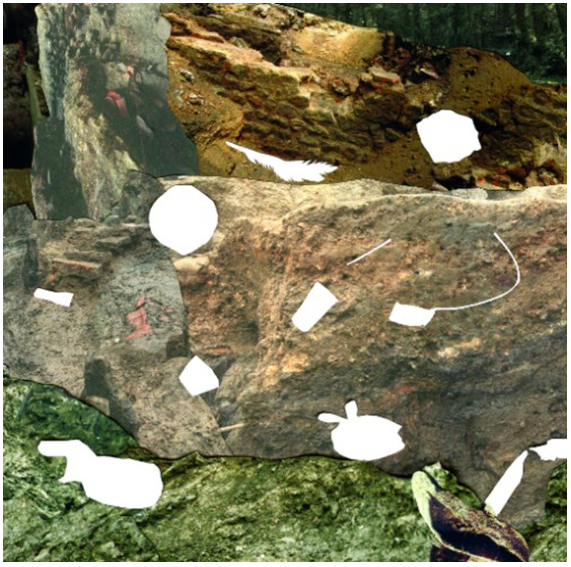Kwan – ALBERTA PANE
Alberta Pane Gallery, 47 rue Montmorency, 75003 Paris, Tel: +33 1 72 34 64 13
March 25 - June 17, 2017
www.galeriealbertapane.com
ANTHROPO-SCENE
/
Alberta Pane gallery is pleased to present Anthropo-Scene a new exhibition by the
British artist Gayle Chong Kwan.
/
The title Anthropo-Scène refers to a 2015 exhibition at the Bloomberg space in London as part of the program « The Homecoming”. The Homecoming selected four artists’ projects exploring the story and the architecture of the city of London.
/
Gayle Chong Kwan’s ‘Anthropo-scene’ is a multi-layered installation that explores the built environment, strata and waste, in relation to the City of London.
Fantastical large wall-based photographic panoramas are created from London’s
lost buildings and contemporary waste. Installations in the gallery recall stacks of
archaeological drawers. The photographic and sculptural elements range in ratio
and scale. Chong Kwan brings together contemporary, historic and archaeological
objects and materials, juxtaposing excavation and construction, ruin and
renewal, and confounding their chronology in order to question what we leave to posterity.
/
Chong Kwan explores different landscape ‘scenes’ in terms of staging the view,
as well as the place, where an action or event occurs. In 2002, Paul Crutzen, the
Nobel Prize-winning chemist, suggested that due to increased human population
and economic activity we have left the Holocene and entered a new geological
epoch. In 2008, a proposal was made to the Stratigraphy Commission of the
Geological Society of London to make Anthropocene a formal unit of geological
epoch division. This shift in the relationship between humanity and nature
further complicates distinctions between artificial and natural, and real and
imaginary-questions raised by Chong Kwan‘s installation.
/
The works in ‘Anthropo-scene’ assert the importance of waste in giving measure
to our lives. Waste is not just ‘matter out place’, a definition first given by Lord
Palmerston in the mid-nineteenth century, it forms a denigrated, subordinate
position within a spatial taxonomy dominated by binaries–clean and dirty, wanted and rejected, inside and outside.
